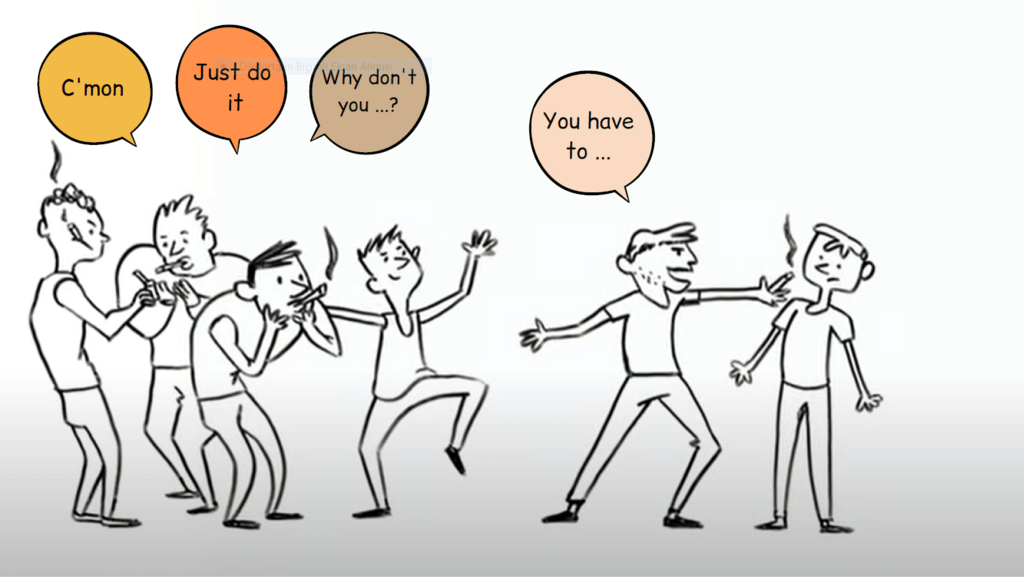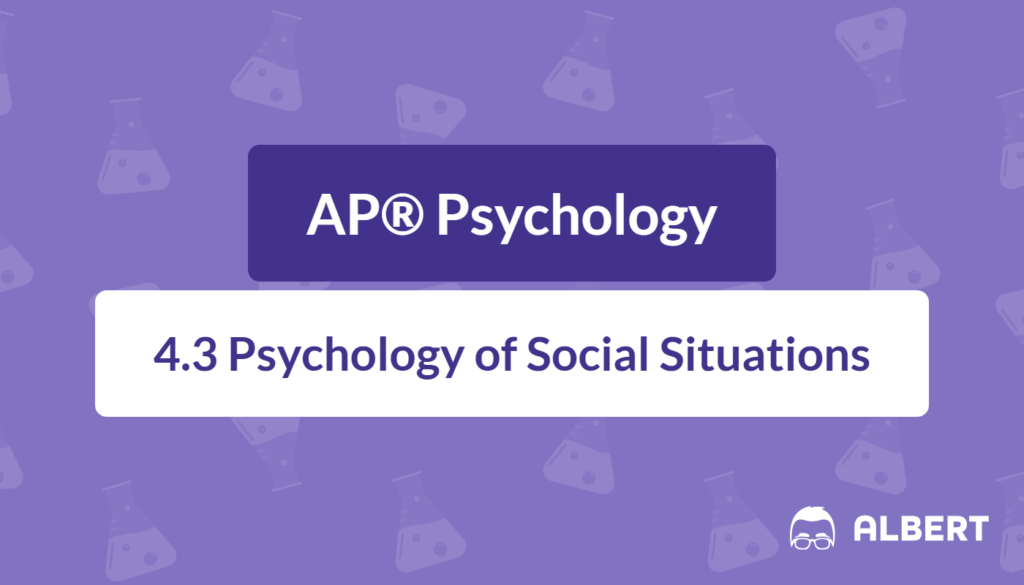What We Review
Social situations shape the way individuals think, feel, and act. By studying interactions through a psychological lens, it is possible to see how social norms, persuasion, and group influence guide everyday behavior. This overview focuses on the importance of these social factors and offers clear examples for high school students preparing for exams like AP® Psychology. Each section includes an example with a step-by-step “solution” illustrating how these principles come to life in real-world settings.
Introduction
Social interactions have a powerful impact on thoughts and emotions. Understanding this social influence helps explain why people follow trends, obey authority, or help others in need. Moreover, recognizing these forces can assist in making more informed choices.
Social psychology looks at group dynamics, culture, and prosocial behavior to understand how situations can encourage certain actions. Therefore, studying these concepts can shed light on everyday encounters and decisions.
Understanding Social Norms
Social norms are the unwritten rules or expectations that guide behavior. They tell individuals what is “appropriate” or “polite” in a given situation. For instance, many societies expect people to greet each other when meeting or to say “thank you” after receiving help.
- Social norms ensure order and structure.
- They can vary across cultures (e.g., bowing in some countries vs. handshakes in others).
- Following social norms often reduces conflict and helps to maintain harmony.
Example: Waiting in Line
Imagine a busy store with a single checkout counter. Most customers will form a line, respecting the order of arrival.
Steps in This Example:
- Observe the environment: Recognize that a line is already formed.
- Position yourself behind the last person: Follow the social norm of “first come, first served.”
- Wait patiently for a turn: Maintain an acceptable distance from the person ahead.
- Complete the purchase without cutting ahead: Adhere to the unspoken rule that it is unfair to skip.
Following this procedure keeps the environment respectful and fair.
Theories of Social Influence
Social influence theory states that people are shaped by the social pressure to behave or think in particular ways. This pressure can be:
- Normative influence: Wanting approval or acceptance from a group.
- Informational influence: Assuming others possess better information about the correct behavior.
These influences often determine how individuals respond in group settings.

Example: Peer Pressure in School
Suppose several friends in a class decide to skip a study group. A student feels torn but ends up agreeing to skip because everyone else is doing so.
Steps in This Example:
- Identify the social group’s behavior: The classmates choose not to attend.
- Recognize the internal conflict: The student worries about missing important material but also wants to fit in.
- Evaluate the potential gains and losses: Attendance might be beneficial academically but risks social isolation.
- Act on the perceived majority opinion: The student follows the group, demonstrating group-driven decision-making.
This example shows how social influence can override personal preferences.
The Art of Persuasion
Persuasion involves convincing others of certain ideas or encouraging particular actions. According to the elaboration likelihood model, there are two main routes to persuasion:
- Central route: Focuses on logical arguments and evidence.
- Peripheral route: Relies on superficial cues, such as a speaker’s appearance or the halo effect (positive feelings toward one aspect carrying over to everything else).
Common persuasion techniques include:
- Foot-in-the-door technique: Asking for a small request first, then a larger one.
- Door-in-the-face technique: Requesting a large favor that is likely refused, followed by a smaller request.
Example: Persuasive Advertising in Marketing
Consider a commercial promoting a new sports drink. It features a famous athlete and bright, appealing visuals.
Steps in This Example:
- Notice the peripheral cues: The athlete’s fame and confident performance.
- Experience the halo effect: Positive feelings about the athlete transfer to the product.
- Encounter persuasive language: Claims of “more energy” or “improved performance.”
- Lean toward purchase due to these influences: The viewer feels the drink may deliver the promises.
This scenario reflects the peripheral route of the elaboration likelihood model.
Conformity and Obedience
Conformity happens when individuals adjust their behavior to match that of a group. Conditions that strengthen conformity include group size, unanimity, and culture. Obedience occurs when a person follows the instructions of an authority figure. Research by psychologists Stanley Milgram and Solomon Asch highlights how easily people submit to social pressure.
Example: Classic Studies
- Asch’s conformity experiments: Participants changed their answers about line lengths to match incorrect group responses.
- Milgram’s obedience study: Participants administered what they thought were electric shocks because an authority figure instructed them to continue.
Steps in the Asch Experiment Example:
- Identify the correct line length on one’s own.
- Hear everyone else pick a clearly wrong answer.
- Experience doubt and peer pressure.
- Often conform by providing the group’s incorrect response.
These studies reveal how powerful group dynamics and authority can be in shaping behavior.
Group Dynamics and Individual Behavior
Being part of a group can drastically influence actions. Key group processes include:
- Group polarization: Group discussions lead people to adopt more extreme positions.
- Groupthink: Desire for harmony leads to poor decision-making, as dissent is discouraged.
- Deindividuation: Individuals lose self-awareness in group settings.
- Social loafing: Some members put in less effort because the group shares responsibility.
- Diffusion of responsibility: People in a group often feel less personal obligation to act.
Example: Decision-Making in a Group Project
A group must choose a topic for a class presentation:
Steps in This Example:
- Brainstorm ideas: Each member shares suggestions.
- Notice potential group polarization: Suggestions become more extreme as people build on each other’s views.
- Avoid groupthink: Encourage all members to offer honest feedback.
- Make a final selection while staying aware of possible social loafing and dividing the work fairly.
Staying mindful of group processes can help a team remain balanced and effective.
The Impact of Culture on Social Behavior
Cultural background strongly affects how individuals think and behave. An individualistic culture (e.g., focusing on personal success) differs from a collectivistic culture (e.g., emphasizing group goals). These differences influence social norms, communication styles, and group expectations.
Example: Celebrating Holidays Across Cultures
One student celebrates birthdays with large parties at home, while a classmate from a collectivistic upbringing focuses more on community activities and family ceremonies.
Steps in This Example:
- Recognize differences: Everyone follows their cultural traditions.
- Acknowledge the reasons behind these practices: Personal choice vs. community-based decisions.
- Develop respect for diversity: Learn that there is not a single correct approach.
- Embrace cross-cultural understanding: Value how cultural context shapes celebrations.
Appreciating cultural variety can reduce conflicts and misunderstandings.
Prosocial Behavior and Its Implications
Prosocial behavior includes any action intended to help others. Altruism, the social reciprocity norm (returning help to those who assist), and the social responsibility norm (feeling responsible for others in need) explain why people perform kind acts.
The bystander effect highlights that people are less likely to help if others are present. Situational factors, such as how many witnesses there are, and attentional factors, like distraction, can reduce the likelihood of assistance.
Example: The Bystander Effect
Someone drops books in a crowded hallway, but no one immediately offers help.
Steps in This Example:
- Notice the incident: The books scatter on the floor.
- Interpret the situation as needing help: The individual is struggling.
- Experience diffusion of responsibility: Assume someone else might help first.
- Decide whether to intervene: Overcoming the bystander effect leads to stepping in to help.
This example shows the influence of social factors on helping behavior.
Quick Reference Chart
Below is a summary of key terms related to social situations:
| Term | Definition |
| Social Norms | Unwritten rules and expectations within a society |
| Social Influence Theory | Idea that social pressure can be normative (desire to fit in) or informational (desire for accurate info) |
| Persuasion | Techniques that convince people of ideas or actions (via central or peripheral routes) |
| Conformity | Adjusting behavior to match a group’s decisions or opinions |
| Obedience | Obeying authority or complying with directives |
| Group Polarization | Tendency of group members to adopt more extreme positions following discussion |
| Groupthink | When a group prioritizes harmony and unity over critical thinking |
| Deindividuation | Loss of self-awareness in a crowd, leading to “group mind” behavior |
| Social Loafing | Tendency for individuals to put less effort into tasks when they are performed in a group |
| Diffusion of Responsibility | Lowered sense of personal accountability in a group |
| Individualism | Cultural value stressing personal goals and individual rights |
| Collectivism | Cultural value placing group needs over personal desires |
| Altruism | Selfless concern for the well-being of others |
| Social Reciprocity Norm | Expectation that one should return help when others have been helpful |
| Social Responsibility Norm | Obligation to act for the benefit of society |
| Bystander Effect | Phenomenon where individuals are less likely to help in the presence of others |
Conclusion
Social situations with a psychology lens reveal how norms, persuasion, and culture interact to change behavior. Therefore, understanding these concepts can improve interpersonal skills and decision-making. Recognizing social traps, conformity pressures, or the bystander effect can help individuals remain mindful of their choices. Finally, comprehending how group influence or cultural context affects actions provides valuable insights for academic and everyday encounters.
These ideas open the door to deeper study and promote sensitivity toward the social realities that shape experiences. High school students, especially those pursuing AP® Psychology, can reflect on these principles to cultivate empathy and awareness both inside the classroom and beyond.
Sharpen Your Skills for AP® Psychology
Are you preparing for the AP® Psychology test? We’ve got you covered! Try our review articles designed to help you confidently tackle real-world AP® Psychology problems. You’ll find everything you need to succeed, from quick tips to detailed strategies. Start exploring now!
- Theories of Motivation: AP® Psychology Review
- Psychology of Emotion: AP® Psychology Review
- Attribution Theory: AP® Psychology Review
Need help preparing for your AP® Psychology exam?
Albert has hundreds of AP® Psychology practice questions, free response, and full-length practice tests to try out.








